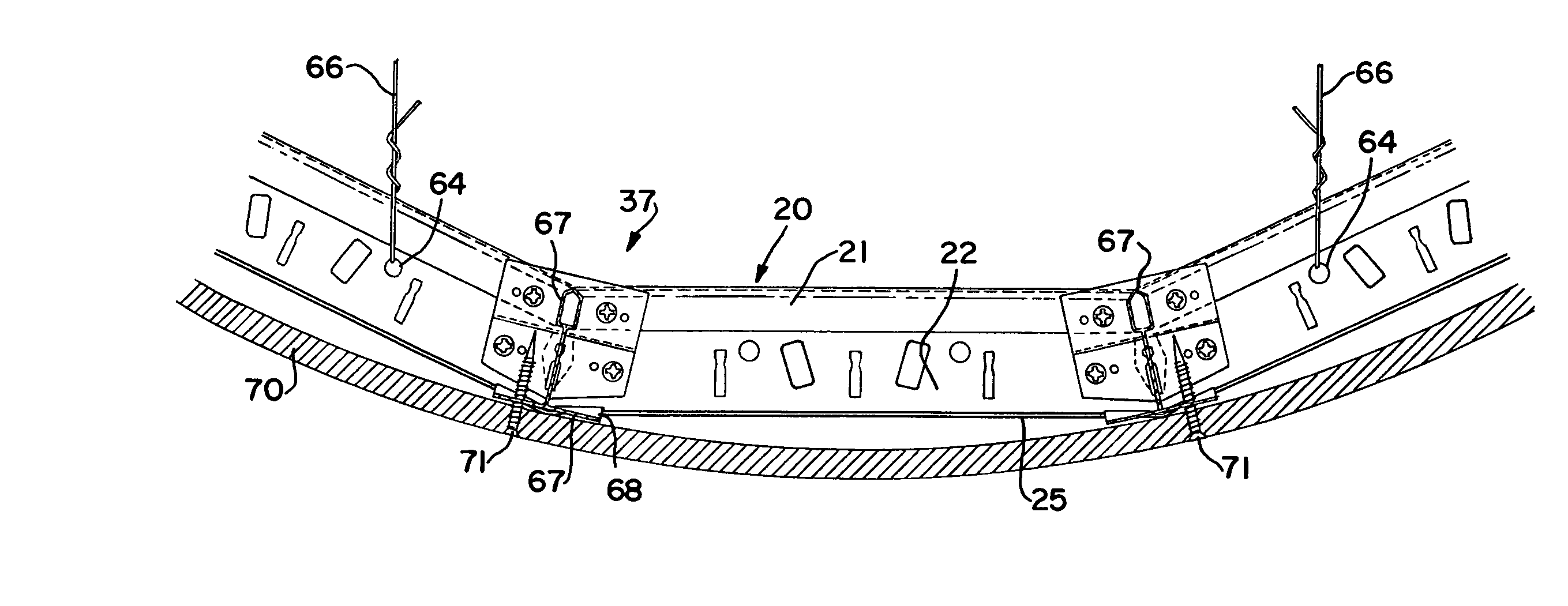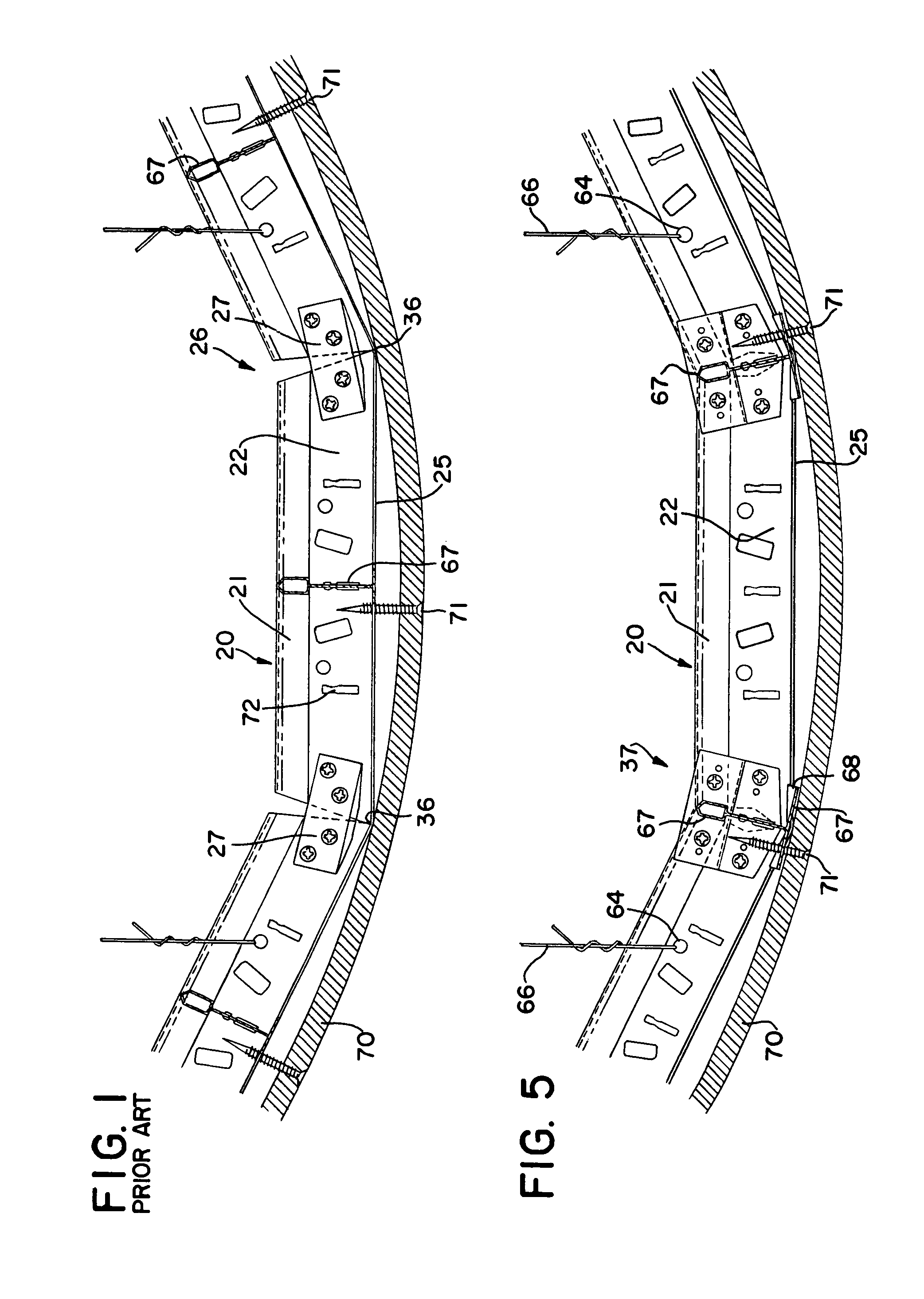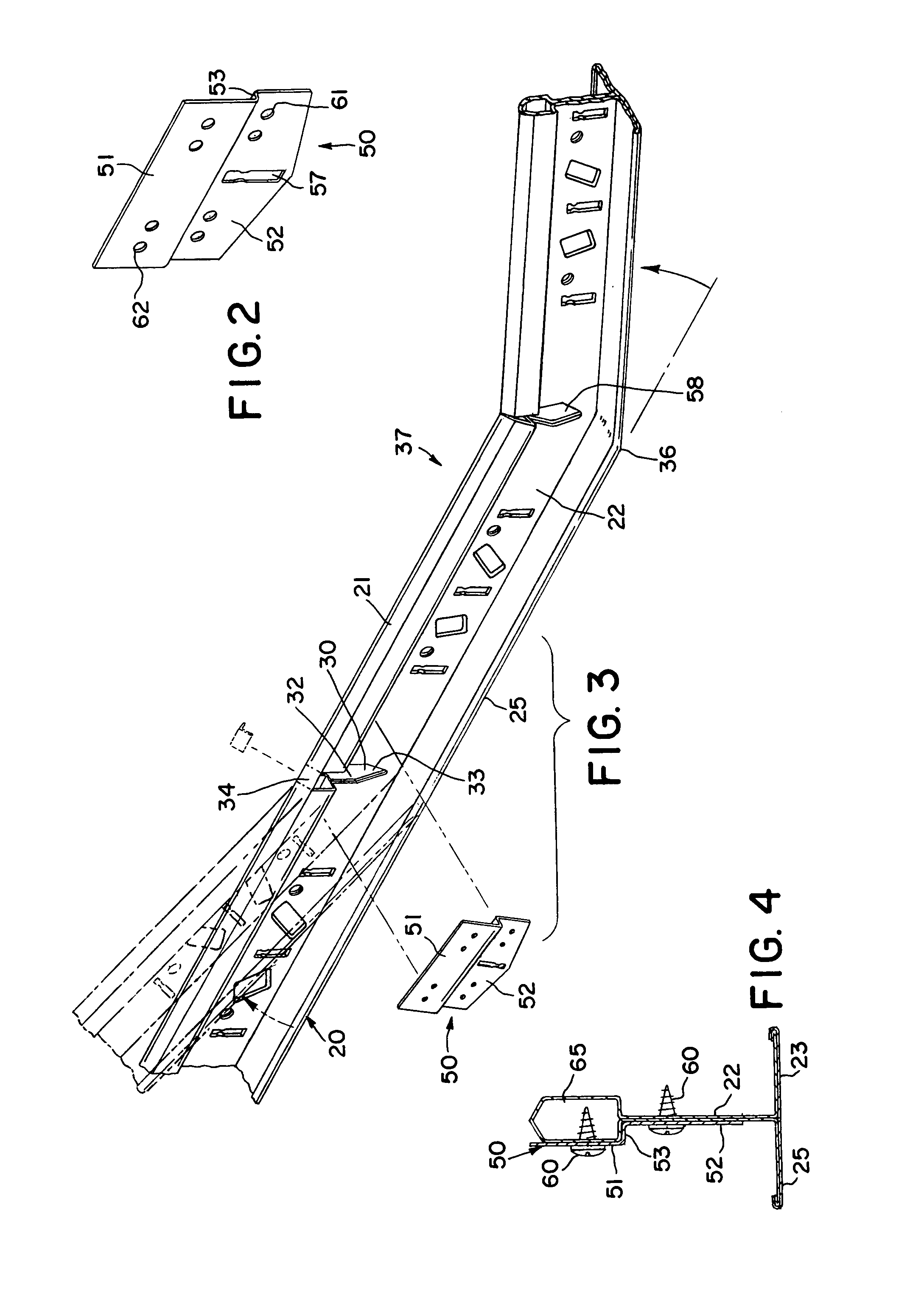Splice plate for faceted radius grid
a technology of faceted radius and splice plate, which is applied in the direction of ceilings, walls, portal frames, etc., can solve problems such as inability to meet the needs of users
- Summary
- Abstract
- Description
- Claims
- Application Information
AI Technical Summary
Benefits of technology
Problems solved by technology
Method used
Image
Examples
Embodiment Construction
[0025] In making convex curved main beam 37, or a concave curved main beam 39, there is first formed a straight beam 20 of inverted T cross section having a bulb 21, web 22, and horizontal flanges 23 and 25, as disclosed in the '850 patent application. Roll forming of a straight beam 20 is well-known in the prior art.
[0026] As the straight, finished beam 20 continuously emerges from the roll forming operation, it is continuously cut into suitable lengths, for instance 12 feet, or 4 feet, or 2 feet, as with a flying shear. Connectors, well-known in the art, are formed on the ends of the straight beams 20. The beams 20 are then stacked and packaged for shipment to the job site for assembly into the grid of a suspended ceiling.
[0027] Cutouts 30, as seen in FIG. 3, are continuously formed in the straight beam 20 as the straight beam 20 is continuously being roll formed in the roll forming operation, as disclosed in the '850 application, before the continuous beam is cut into lengths. ...
PUM
 Login to View More
Login to View More Abstract
Description
Claims
Application Information
 Login to View More
Login to View More - R&D
- Intellectual Property
- Life Sciences
- Materials
- Tech Scout
- Unparalleled Data Quality
- Higher Quality Content
- 60% Fewer Hallucinations
Browse by: Latest US Patents, China's latest patents, Technical Efficacy Thesaurus, Application Domain, Technology Topic, Popular Technical Reports.
© 2025 PatSnap. All rights reserved.Legal|Privacy policy|Modern Slavery Act Transparency Statement|Sitemap|About US| Contact US: help@patsnap.com



